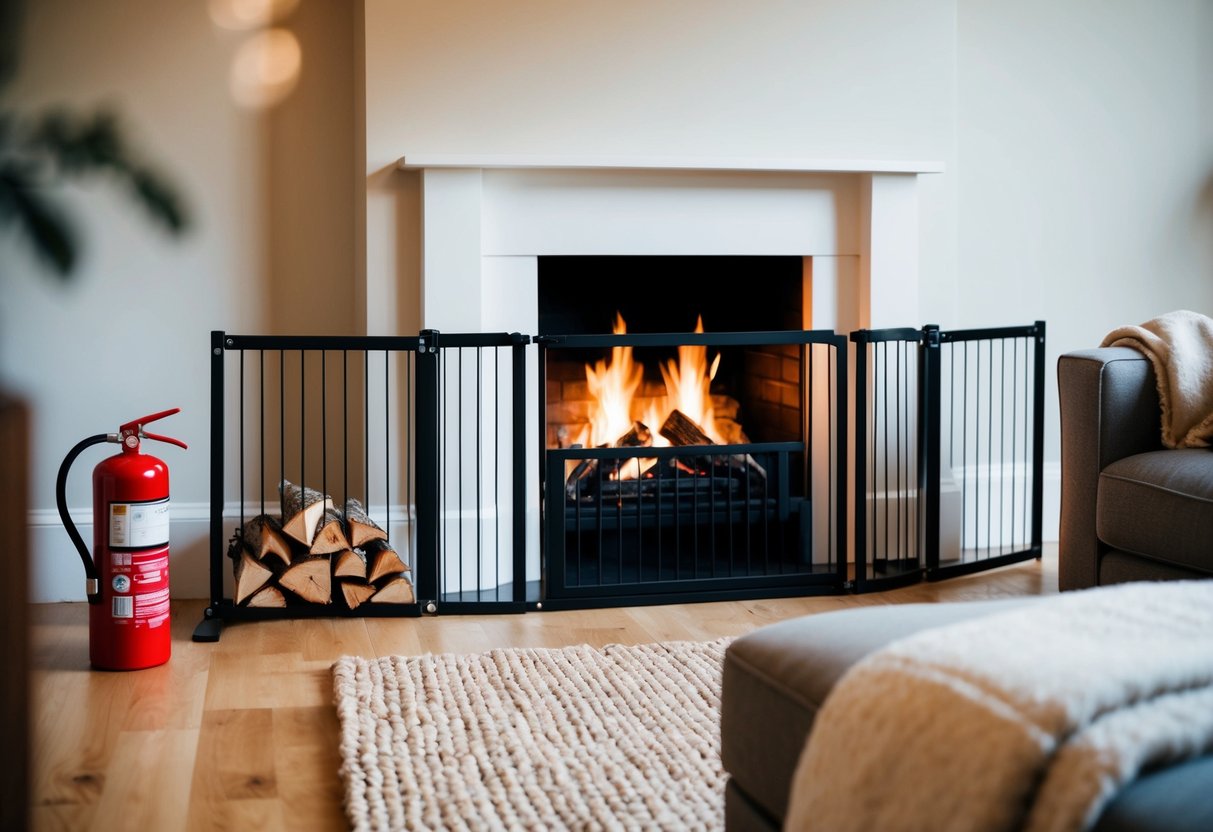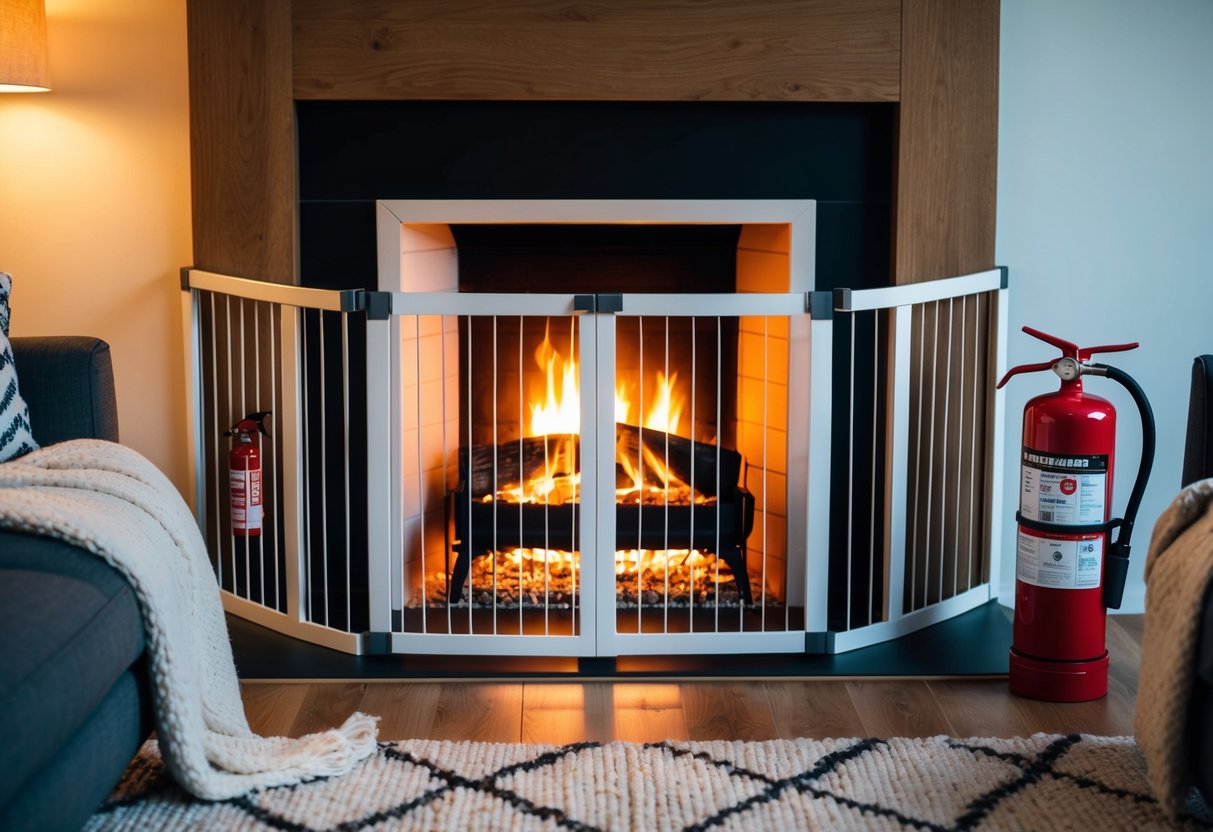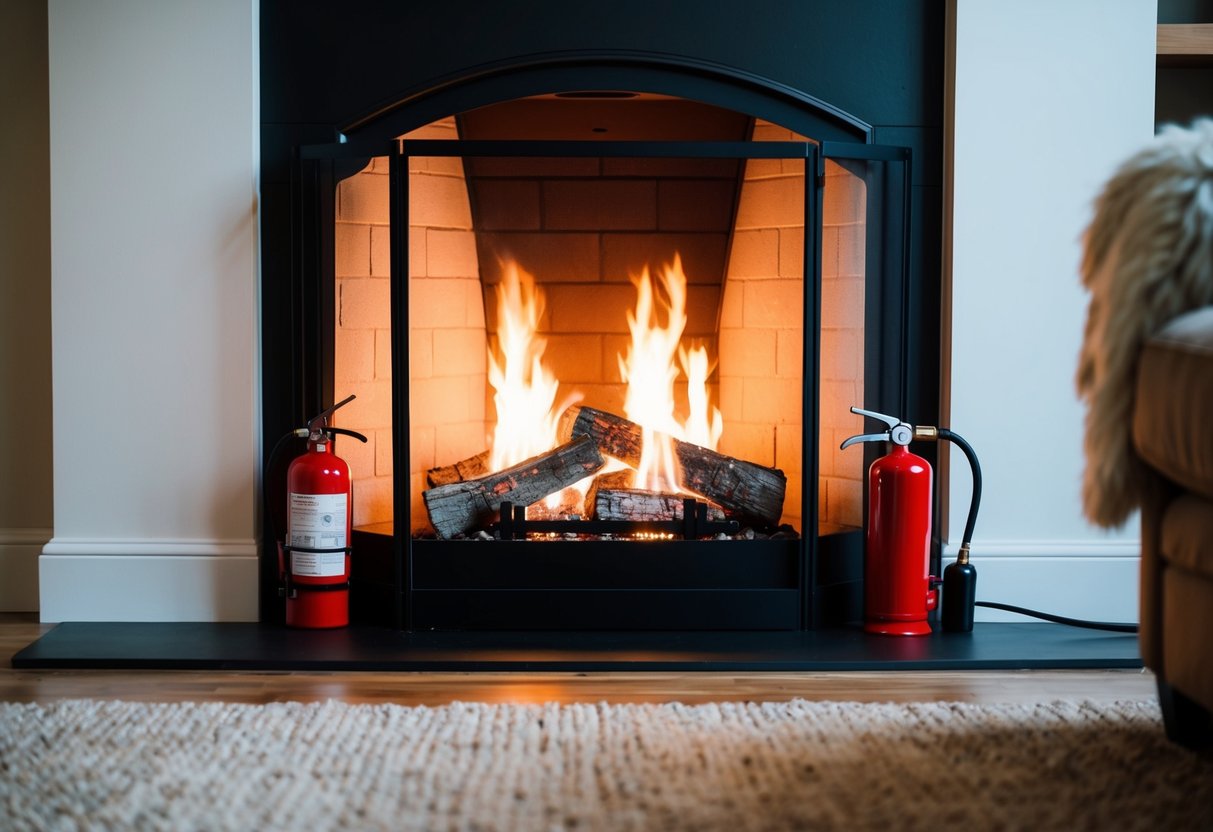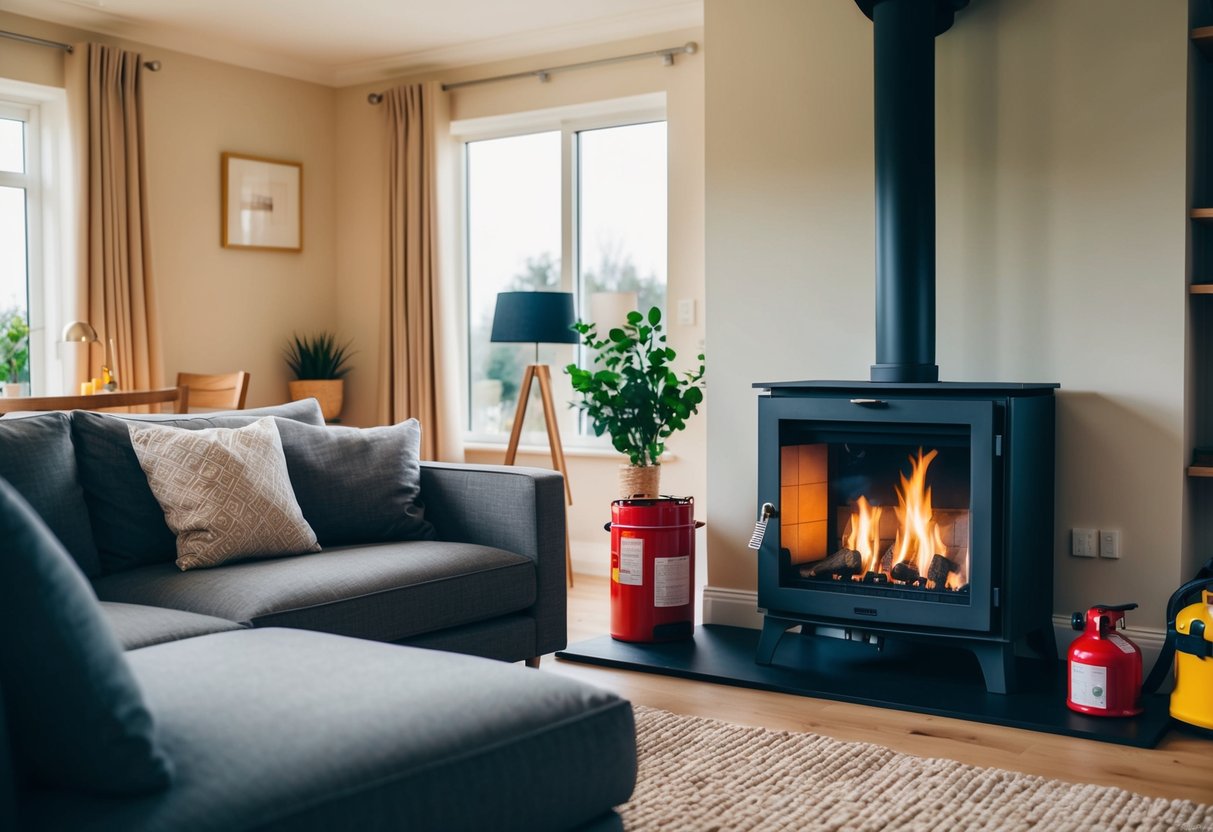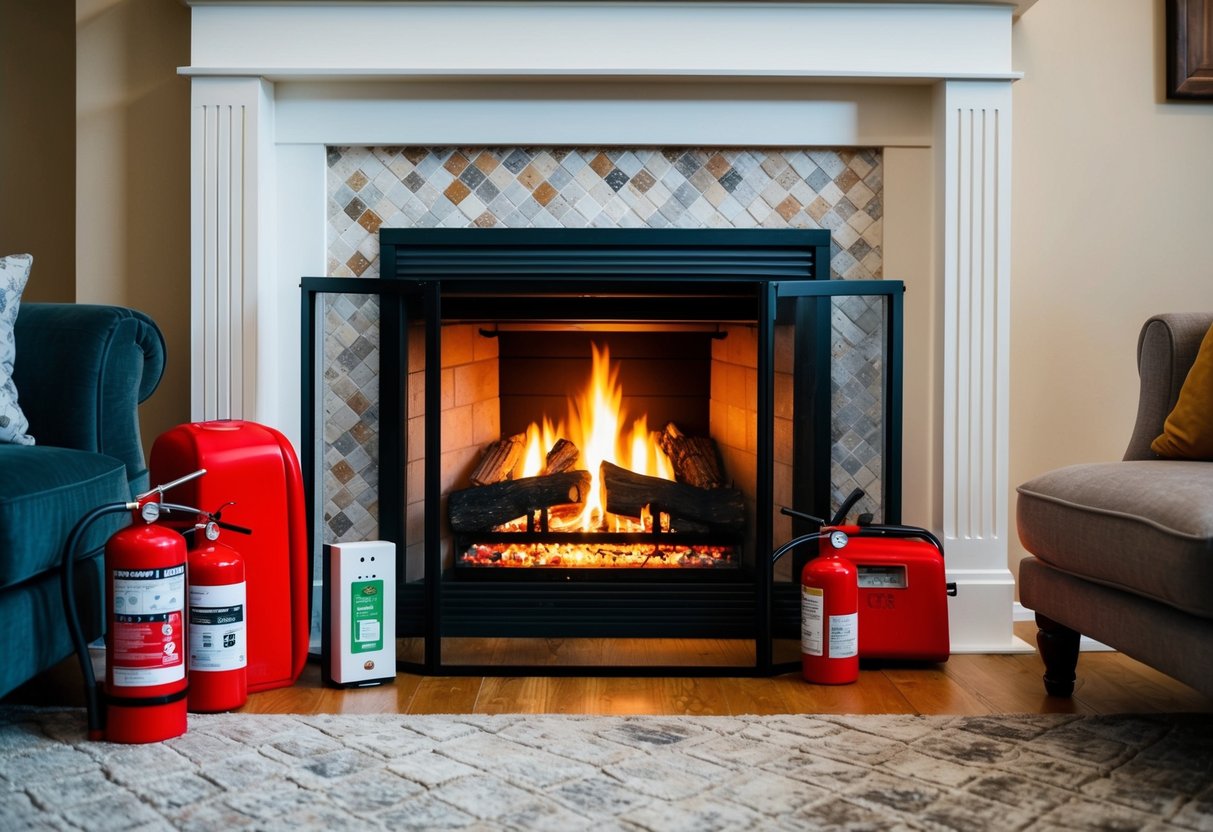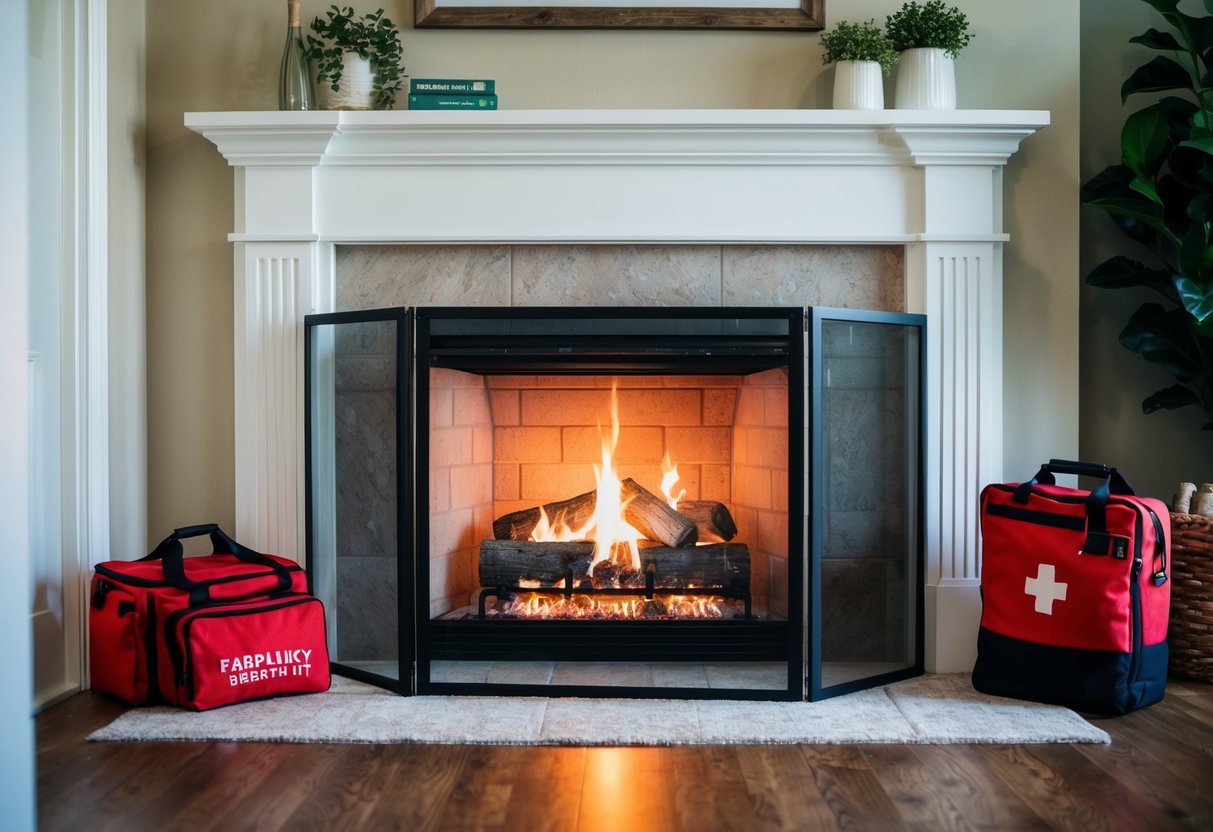Introduction
As winter settles in, many seek the warmth of a crackling fireplace. While fireplaces provide a cozy atmosphere, they can also pose safety risks if not properly maintained. Understanding the key safety practices can help ensure that enjoying the fireplace remains a safe and pleasant experience throughout the colder months.
Regular inspections, proper usage, and maintenance are critical to preventing potential hazards. Adequate preparation, such as hiring a professional chimney sweep, can help keep a fireplace in good working condition and avoid dangerous situations like chimney fires and carbon monoxide leaks. Awareness of equipment best practices also plays a significant role in maintaining a secure home environment during the winter.
This article offers essential tips for fireplace safety, ranging from upkeep to emergency preparedness, making it a valuable resource for homeowners. Readers will discover how to enjoy their fireplaces worry-free, knowing they have taken necessary precautions for their family’s safety.
Key Takeaways
- Regular inspections are vital for maintaining fireplace safety.
- Proper usage can reduce the risk of hazards associated with fireplaces.
- Being prepared for emergencies enhances home safety during winter.
Understanding Fireplace Safety Fundamentals
Effective fireplace safety hinges on maintenance practices and fuel selection. Recognizing risks associated with inadequate upkeep and the merits of using seasoned wood can significantly enhance home safety during winter months.
Risks of Inadequate Maintenance
Neglecting regular maintenance can lead to dangerous situations, including chimney fires. Creosote, a byproduct of burning wood, accumulates in the chimney over time. This flammable substance ignites when it reaches high temperatures, potentially causing a fire that can spread quickly.
Annual inspections are crucial for identifying deterioration or obstructions in the chimney. Homeowners should also clear away any debris or bird nests from the chimney flue. Failure to perform these tasks increases the risk of dangerous fires and inefficient heating.
Moreover, an unmaintained fireplace can lead to carbon monoxide buildup in the home. This colorless, odorless gas poses severe health risks. Regular check-ups ensure safety and promote a efficiently functioning fireplace.
Benefits of Using Seasoned Wood
Choosing seasoned wood for a fireplace offers multiple benefits. Seasoned wood has a lower moisture content, typically below 20%. This quality results in more efficient burning, delivering more heat while producing less smoke.
Using well-seasoned wood also minimizes creosote buildup in the chimney. By reducing this buildup, the risks associated with chimney fires decrease significantly. This practice not only enhances safety but also contributes to the longevity of the fireplace and chimney.
Additionally, seasoned wood produces less air pollution, promoting a healthier environment. It is advisable to source firewood from reputable suppliers and store it properly to ensure it remains dry. Proper firewood selection can contribute to a warm and safe winter experience.
Preventing Hazards
Maintaining safety while enjoying a fireplace involves managing flammable materials and ensuring proper ventilation. Addressing these two areas effectively can significantly reduce the risk of fire hazards.
Keeping Flammables at a Safe Distance
Flammable materials should always be kept a minimum of three feet away from the fireplace. This includes items such as wood, paper, fabric, and any other combustible substances. It’s essential to assess the area regularly to remove any debris or unnecessary items that may pose a risk.
Fireplace tools like pokers and brushes should be stored properly after use, and decorative items should be positioned strategically. Additionally, using a sturdy fire screen or glass doors can protect against sparks and embers, keeping the area around the fireplace secure. Ignoring these guidelines can lead to dangerous fires that may quickly escalate.
Ensuring Proper Ventilation
Proper ventilation is crucial when using a fireplace to prevent the buildup of toxic gases, like carbon monoxide. It is vital to ensure that chimneys are clean and free from blockages that could impede airflow. Scheduling a professional inspection annually can help maintain a safe and efficient burn.
Ventilation tips include opening windows slightly during use and monitoring indoor air quality. Homeowners should also be aware of the signs of poor ventilation, such as smoke backdraft or excess soot accumulation. Maintaining an open flow of fresh air helps ensure that the fireplace burns cleanly and occupiers remain safe.
Chimney and Fireplace Maintenance
Proper maintenance of the chimney and fireplace is essential to ensure safety and efficiency during the winter months. Regular upkeep helps prevent dangerous situations such as chimney fires and carbon monoxide build-up.
The Importance of Regular Chimney Sweeping
Chimney sweeping is crucial for removing creosote, a flammable substance that accumulates from burning wood. As creosote builds up, it poses an increased risk of chimney fires.
A professional chimney sweep is trained to inspect and clean the chimney effectively. They use specialized tools to ensure every part of the chimney is accessible and cleaned thoroughly. Homeowners should aim to have their chimneys swept at least once a year, especially if they use their fireplace frequently.
Routine sweeping not only enhances safety but also improves the efficiency of the fireplace, allowing for better airflow. This means a warmer and more enjoyable fire while reducing energy costs.
When to Perform a Chimney Inspection
Regular chimney inspections are vital for identifying potential hazards. Homeowners should schedule an inspection before the heating season starts each year.
During a chimney inspection, a professional evaluates the entire system for issues like blockages, cracks in the flue liner, and damage to the chimney cap. If the fireplace has not been used in years, an inspection becomes even more important to ensure it is safe to use.
Additionally, homeowners should consider inspections after severe weather events or if they notice problems like unusual odors or smoke backing up into the home. Maintaining awareness of these signs can prevent costly repairs and enhance household safety.
Equipment and Usage Best Practices
Proper equipment and knowledge on how to use it safely are crucial for maintaining a secure and comfortable environment when using a fireplace. This section highlights the essential tools and best safety practices while operating a fireplace.
Selecting the Right Fireplace Tools
Having the appropriate tools is vital for fireplace maintenance and safety. Essential tools include a fireplace screen, which prevents sparks or embers from escaping, reducing fire hazards. A sturdy screen is crucial for safety, especially in homes with children or pets.
Additionally, basic fireplace tools such as a poker, tongs, and a shovel are necessary for managing the fire. These tools allow for safe manipulation of logs and ash without getting too close to the flames.
A fire extinguisher should be accessible and inspected regularly to ensure functionality. Homeowners should also keep kindling and fire-starting materials organized and stored safely away from the fireplace to minimize fire risks.
Operating Your Fireplace Safely
Safety practices are essential when using a fireplace. Never leave a fire unattended; doing so can lead to uncontrollable flames and smoke damage. It is advisable to always have someone in the room when the fire is lit.
Before lighting the fire, check that the flue is open to ensure proper ventilation. This step helps prevent dangerous carbon monoxide buildup inside the home. Monitor the flame height and avoid overloading the fireplace with too much wood, which can create excessive heat and hazards.
Regular maintenance is key. Keep the fireplace clean by regularly clearing out ash and creosote build-up, which minimizes the risk of chimney fires. Use small pieces of kindling to start the fire, gradually adding larger logs as the fire strengthens. This method promotes a controlled burn and enhances safety.
Protective Measures and Emergency Preparedness
Taking appropriate protective measures and preparing for emergencies is essential for ensuring fireplace safety during winter. Implementing safety devices and having a solid emergency plan helps minimize risks associated with fireplace use.
Installing and Testing Detectors
Proper installation and regular testing of smoke and carbon monoxide detectors are vital for home safety. Smoke detectors should be placed near sleeping areas and on every level of the home. Carbon monoxide detectors are equally important, especially near bedrooms and living areas.
It is recommended to test these detectors monthly by pressing the test button. Replace batteries at least once a year or when the low-battery warning sounds. Homeowners should also replace detectors every 10 years, as their sensors can degrade over time. A strategy that combines warning systems with fireplace safety tips will provide an added layer of security.
Planning for Potential Fireplace Emergencies
Being prepared for fireplace emergencies involves having a clear action plan. Homeowners should ensure that fire extinguishers are accessible and fully charged. It is advisable to keep flashlights available in case of power loss, ensuring that exits and safety equipment are visible.
In addition to having emergency contacts on hand, families should conduct fire drills and establish an escape route. This route should lead to a safe area away from the house. By being proactive, individuals can mitigate the dangers associated with fireplace use and enhance their overall safety during the winter season.
Frequently Asked Questions
Fireplace safety and maintenance are crucial for ensuring a warm and secure home during winter. The following FAQ addresses common concerns regarding fireplace usage, maintenance, and safety tips.
How do I make sure my fireplace is safe to use?
To ensure a fireplace is safe, perform a visual inspection for any cracks or damage in the structure. Check for obstructions in the chimney and ensure that the flue opens and closes properly. Additionally, installing a chimney cap can prevent debris and animals from entering the flue.
What steps should be taken to maintain a fireplace during winter?
Regular maintenance includes cleaning ashes and debris from the fireplace after each use. Homeowners should stock appropriate firewood and avoid burning treated wood or materials that can create toxic fumes. Ensure the damper is functioning well to control airflow.
Are there special considerations for using a wood-burning stove as opposed to a traditional fireplace?
Wood-burning stoves require proper installation and clearance from combustible materials. Users should select the right type and size of wood for efficient burning and be aware of air intake adjustments to regulate heat output. Regular cleaning of the stove and flue is essential to prevent creosote buildup.
What should I do to effectively heat my house with a fireplace?
To heat a house effectively, homeowners should use seasoned firewood for a consistent burn. Placing a fan to circulate warm air can enhance heat distribution. Closing exterior doors and windows during use helps maintain the indoor temperature.
What are the most important safety tips for using a fireplace in the winter?
Key safety tips include keeping flammable materials away from the fireplace and using a screen to contain sparks. Never leave a fire unattended, and ensure smoke detectors are functioning properly. Educating household members about fireplace safety is also essential.
How often should chimney inspections and cleanings be performed?
Chimneys should be inspected at least once a year, ideally before the start of the heating season. If regular use of the fireplace occurs, cleaning may be necessary more frequently, typically when creosote buildup exceeds one-eighth of an inch. Regular inspections help identify potential hazards.

